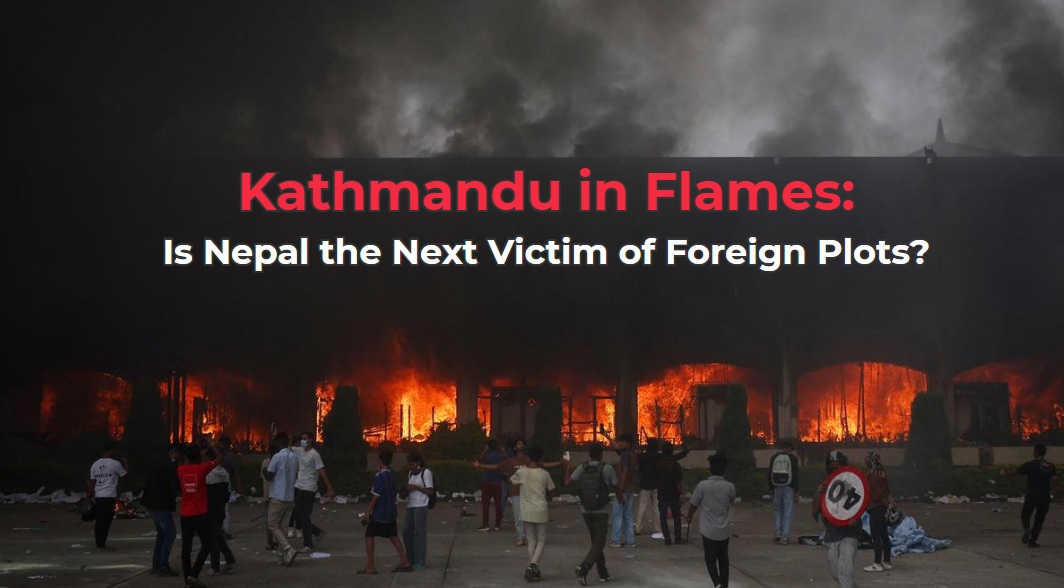Nepal was thrown into political turmoil on Tuesday as Prime Minister K.P. Sharma Oli resigned following days of violent protests triggered by the government’s controversial social media ban. His resignation was confirmed by aide Prakash Silwal, with Oli stating in his letter that he was stepping down “to facilitate a solution and help resolve the crisis politically.”
But this is not just about a ban on a few apps. The chaos unfolding in Kathmandu is part of a much larger, troubling pattern that has shaken South Asia’s political stability in recent years.
The Domino Effect in South Asia
Over the past three years, South Asia has witnessed a string of dramatic political crises:
📌 Pakistan saw the ouster and imprisonment of Imran Khan.
📌 Sri Lanka collapsed into a devastating economic meltdown in 2022, with protesters storming the President’s residence.
📌 Bangladesh experienced a violent change of power in 2024, when youth-led movements overthrew the elected government.
Now, Nepal appears to be the next casualty. The intensity of the protests has shocked the Himalayan nation: Parliament and the Supreme Court have been set ablaze, homes of ministers and senior leaders have been attacked, and even the private residences of the President and Prime Minister were stormed and torched. Reports from Kathmandu describe total anarchy, with Finance Minister Janardan Sharma chased and beaten by mobs in the streets.
The protesters’ new demand? That Kathmandu’s Mayor, Balendra Shah, be elevated as the next Prime Minister — a radical shift reminiscent of the populist upheavals in Bangladesh and Sri Lanka.
Was This Just About a Social Media Ban?
While the government’s ban on several social media platforms initially triggered the unrest, analysts suggest the protests were not spontaneous outbursts but rather the outcome of careful orchestration. The events raise urgent questions:
👉Was the ban merely a pretext for a larger coup-style upheaval?
👉Were external forces — possibly the same that influenced regime change in Pakistan, Bangladesh, and Sri Lanka — involved?
👉Did domestic factions, frustrated with corruption and Oli’s perceived closeness to China, exploit the situation to push for regime change?
The evidence so far points to a deep-rooted conspiracy, not just digital censorship.
Bangladesh 2.0?
Observers are calling Nepal’s crisis “Bangladesh Part Two.” The similarities are striking:
👉Angry youth movements spearheading violent protests.
👉The storming of Parliament and leaders’ residences.
👉Prison breaks, mob lynchings, and targeted killings of political families.
👉The resignation of both the Prime Minister and the President within hours of each other.
In just 36 hours, Nepal’s political system has been brought to its knees, echoing the rapid collapse seen in Dhaka last year.
External Hands: China vs. the U.S.?
The geopolitical dimension cannot be ignored. Oli has long been accused of being “Beijing’s man” in Kathmandu. Many of his government’s key decisions were reportedly influenced by Chinese diplomats, fuelling resentment within Nepal’s political class and among the public.
Meanwhile, the banned apps were U.S.-based platforms, and their suspension immediately triggered chaos — raising suspicions that Western powers might have seized the moment to engineer regime change, just as they were accused of doing in Bangladesh.
The playbook looks familiar: create chaos over a “youth cause,” fuel it through digital networks, and push for a populist regime change.
The Broader South Asian Pattern
From Pakistan to Indonesia, a disturbing pattern is emerging:
👉Domestic discontent (economic crisis, corruption, censorship).
👉Amplification through social media mobilization.
👉Violent street protests escalating into direct attacks on institutions.
👉Forced resignations or exiles of top leaders.
👉Emergence of new, often populist or externally influenced leadership.
Nepal has now entered this cycle.
India’s Security Concerns
For New Delhi, the unrest in Nepal is not just a neighbor’s problem. Indian officials believe the violence could easily spill across the border. The Ministry of External Affairs has already issued advisories to Indian citizens in Nepal, urging them to remain indoors. Border security has been tightened, and monitoring has been increased to prevent infiltration or cross-border violence.
There are also fears that the Nepal unrest could embolden attempts to destabilize India through similar protest models, reminiscent of the farmers’ protests in Delhi, where foreign influence and Khalistani elements were alleged.
What Lies Ahead for Nepal?
The situation remains fluid and dangerous:
👉The Army has taken control of key installations in Kathmandu.
👉Both the Prime Minister and the President have resigned, leaving a political vacuum.
👉If the Army restores order quickly, a caretaker government or even a return to monarchy could be on the table.
👉If violence continues, Nepal could plunge into a prolonged cycle of chaos, similar to post-crisis Sri Lanka.
Over 22 people have reportedly been killed in the protests so far. With mobs still in control of several key sites, tonight may prove decisive for Nepal’s future.
A Regional Crisis with Global Implications
The resignation of K.P. Oli is more than just a domestic political shake-up. It represents the latest flashpoint in a series of coordinated regime changes across South Asia, where corruption, populism, foreign interference, and frustrated youth movements collide.
The real question is: who benefits from this chaos? Is Nepal merely the latest battleground in the China–U.S. rivalry, or is it falling victim to the same global forces that have destabilized other fragile democracies?
For now, Nepal stands at a crossroads. If order is not restored swiftly, the Himalayan nation could become the region’s next cautionary tale of democracy consumed by anarchy.
#nepal, #kpsharmaoli, #dailydozes, #nepalvsgenZ, #kathmandu, #genzprotests, #nepalprotest, #socialmediaban, #kathmanduprotests, #nepalprotests, #socialmedia, #resign, #rameshlekhak, #KathmanduProtest, #NepalSocialMediaBanProtest, #NepalYouth, #NepalUnrest, #YouthUprising, #NepalNews, #standwithnepal, #Nepalarmy, #Corruption, #Nepalelection,
Discover more from DailyDozes NEWSPAPER
Subscribe to get the latest posts sent to your email.
